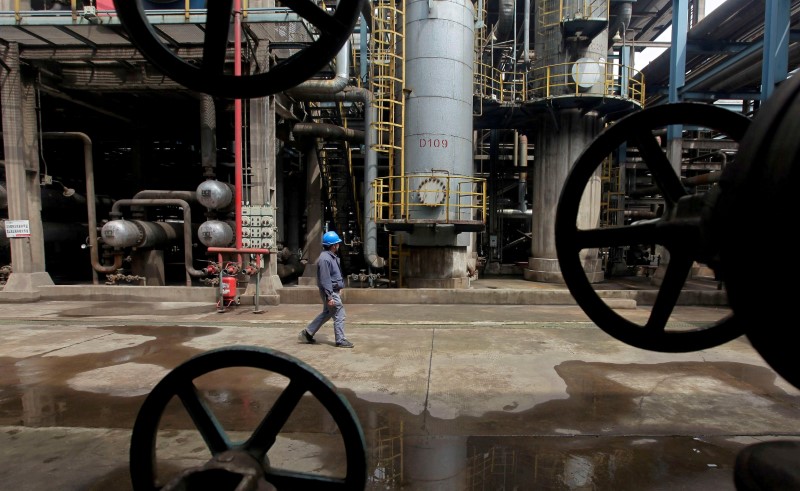[ad_1]
© Reuters. A view shows the Yan Dun Jiao 1 bulk carrier in the Vostochny container port in the shore of Nakhodka Bay near the port city of Nakhodka, Russia August 12, 2022. REUTERS/Tatiana Meel
By Sonali Paul
MELBOURNE (Reuters) – Oil rose in early trade on Friday, trimming some of the week’s losses which have been driven by worries about Chinese demand and expectations a high price cap planned by the Group of Seven (G7) nations on Russian oil will keep supply flowing.
futures inched up 13 cents, or 0.2%, to trade at $85.47 a barrel at 0121 GMT.
U.S. West Texas Intermediate (WTI) crude futures jumped 35 cents, or 0.5%, from Wednesday’s close to $78.32 a barrel. There was no WTI settlement on Thursday due to the U.S. Thanksgiving holiday.
Both contracts were headed for their third consecutive weekly decline, on track to fall about 2% with worries about tight supply easing.
G7 and European Union diplomats have been discussing a price cap on Russian oil of between $65 and $70 a barrel, with the aim of limiting revenue to fund Moscow’s military offensive in Ukraine without disrupting global oil markets.
“The market considers (the price caps) too high which reduces the risk of Moscow retaliating,” ANZ Research analysts said in a note to clients.
Russian President Vladimir Putin has said Moscow will not supply oil and gas to any countries that join in imposing the price cap, which the Kremlin reiterated on Thursday.
ANZ also said there are signs that a surge in COVID-19 cases in China, the world’s top oil importer, is starting to hit fuel demand, with traffic drifting down and implied oil demand around 13 million barrels per day, or 1 million bpd lower than average.
“This remains a headwind for oil demand that, combined with weakness in the U.S. dollar, is creating a negative backdrop for oil prices,” ANZ said in a separate commodity note.
Trading is expected to remain cautious ahead of an agreement on the price cap, due to come into effect on Dec. 5 when an EU ban on Russian crude kicks off, and ahead of the next meeting of the Organization of the Petroleum Exporting Countries and allies, known as OPEC+, on Dec. 4.
In October, OPEC+ agreed to reduce its output target by 2 million barrels per day through 2023, and Saudi Arabian Energy Minister Prince Abdulaziz bin Salman was quoted saying this week that OPEC+ was ready to cut output further if needed.
[ad_2]
Image and article originally from www.investing.com. Read the original article here.

